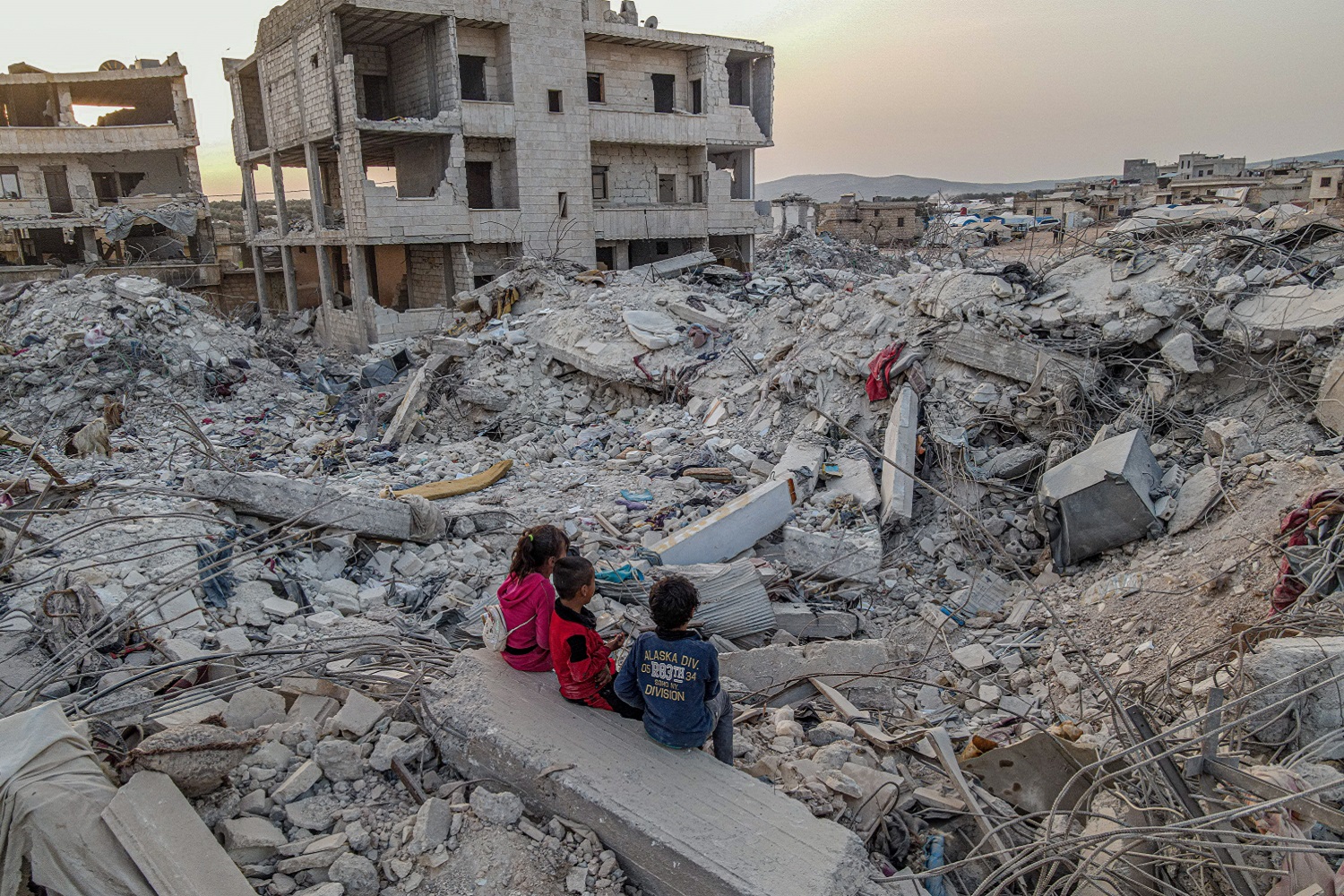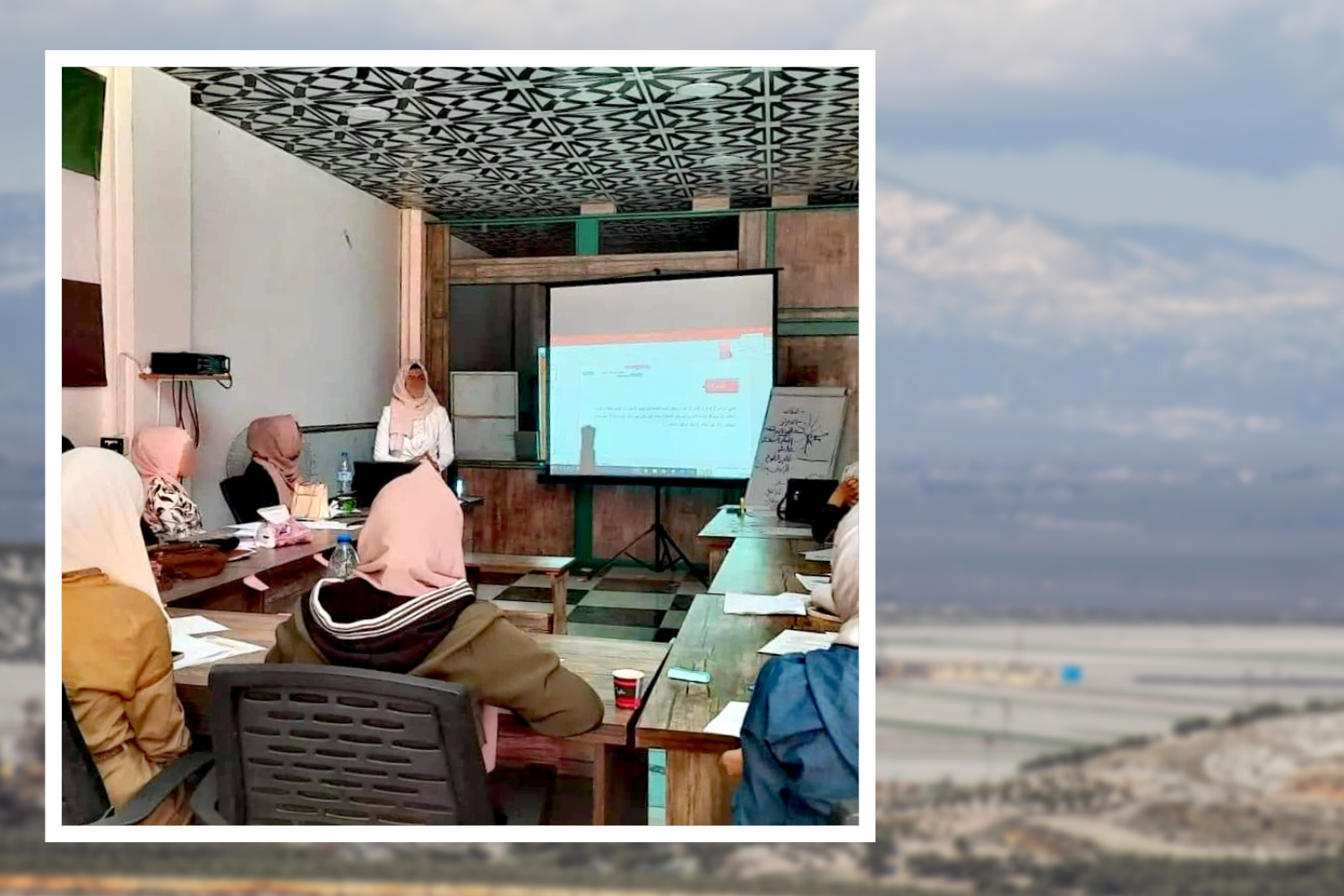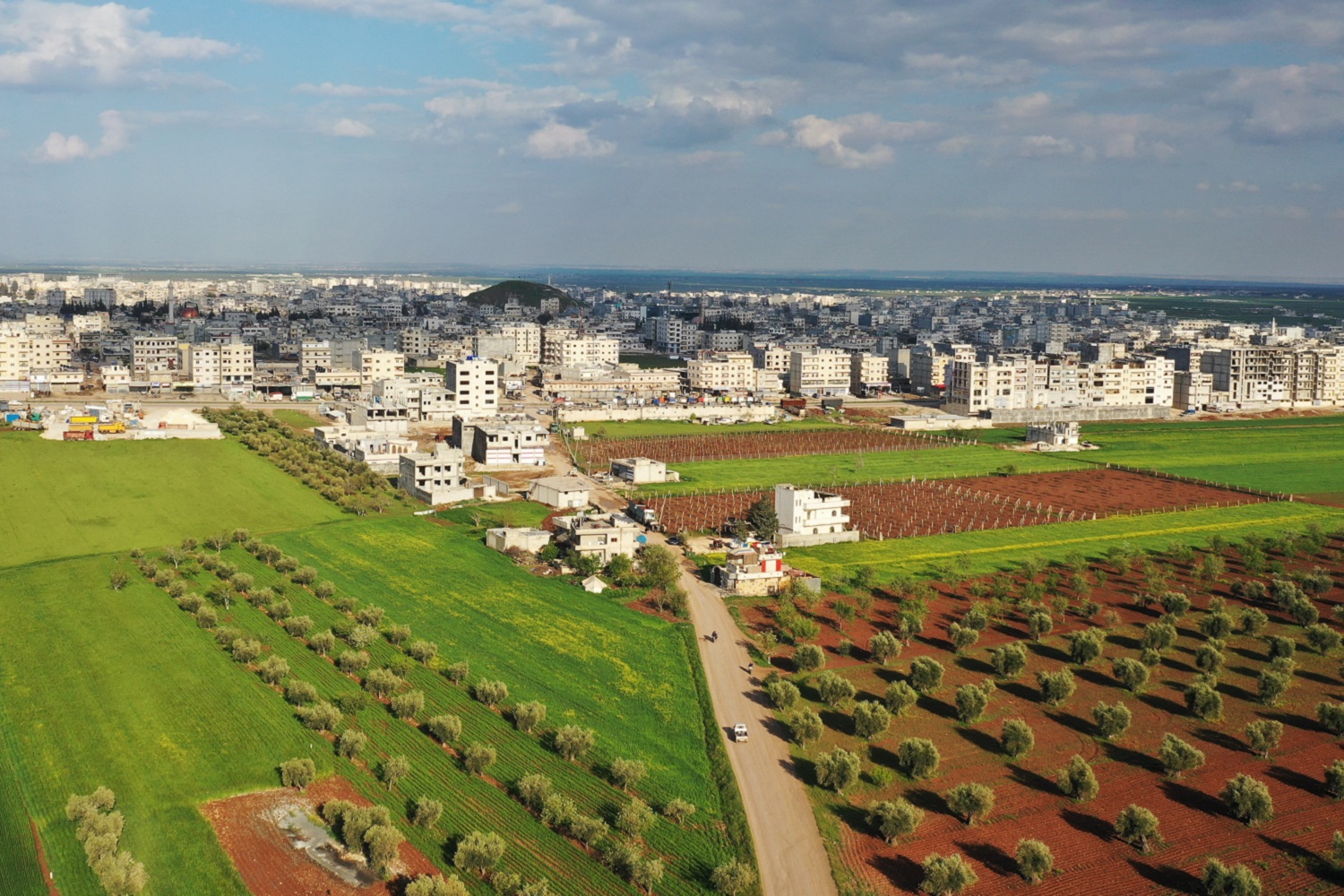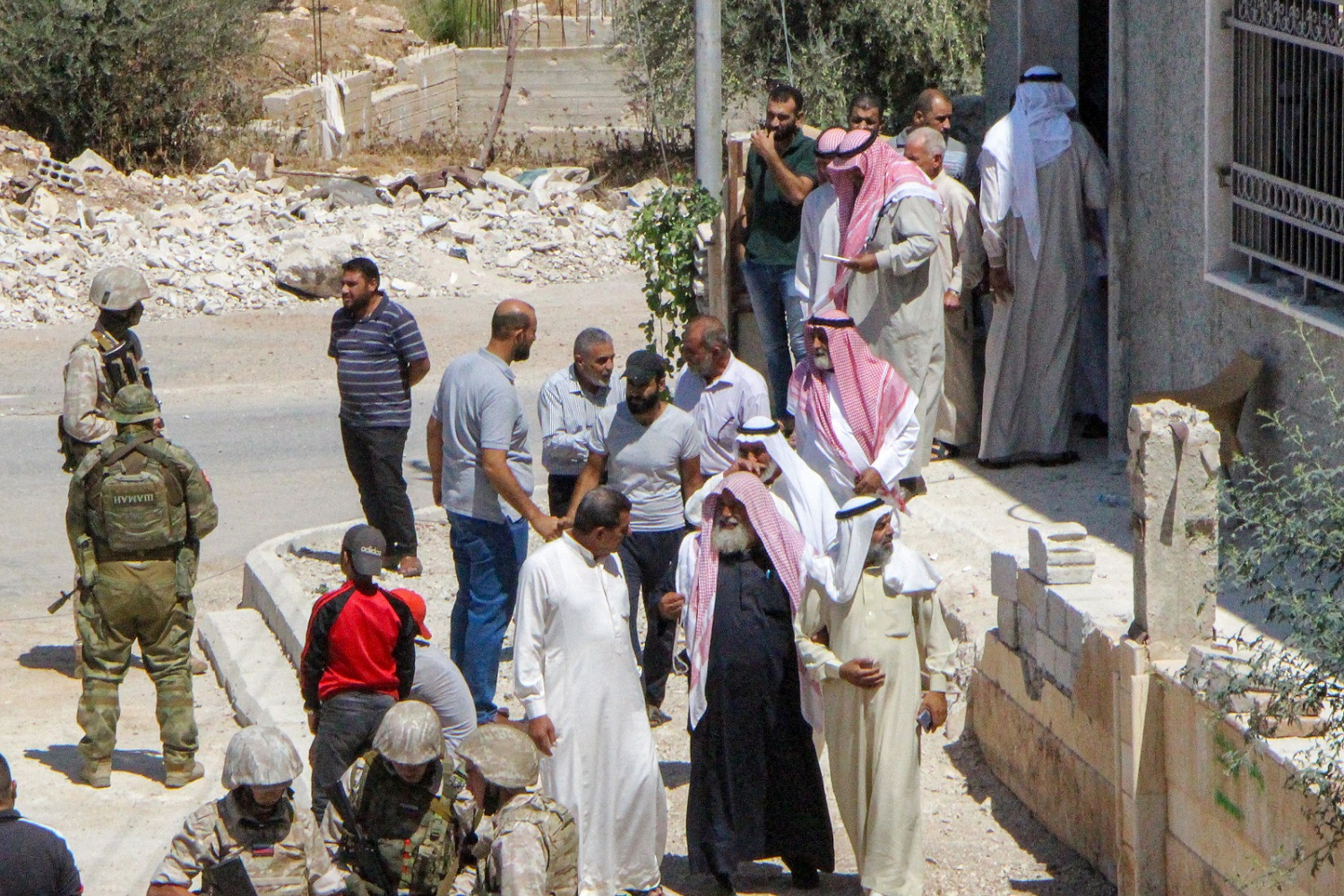In February 2023, the border areas between Turkey and Syria were hit by a series of devastating earthquakes that triggered yet another humanitarian emergency in lands that already bear the scars of the twelve-year long Syrian conflict.
Juline Beaujouan discusses how response to the humanitarian situation swiftly took a geopolitical turn and raised the curtain for a changing regional order. On the centre stage: a ballet of inter-Arab high-ranked international visits and meetings under the watchful eye of the United States.
The return of Arab leadership in the Syrian case?
In the wake of the Syrian conflict, Arab states took on the task to negotiate a prompt and peaceful political transition. While a number of Gulf states backed the Syrian opposition financially and politically, like Qatar which hosted the establishment of the National Coalition of Syrian Revolution and Opposition Forces in November 2012, the League of Arab States launched a mediation mission aimed at securing a general ceasefire and initiating a national dialogue. Following the failure of the mission, the Syrian case was passed to the UN (United Nations) in January 2012. Ever since, Arab countries have not managed to provide any kind of regional leadership over the peace process, crippled by their own internal conflicts as best exemplified by the Qatar diplomatic crisis (June 2017-January 2021). Despite their own challenges, several Arab states continued to vocally support the removal of Bashar al-Assad … until recently.
Since 2018, which corresponds with the military victory of the Syrian armed forces in the south of the country – the main gateway to the rest of the Arab region – Arab countries have shown signs of a rapprochement with al-Assad’s regime, pushed by the United Arab Emirates (UAE); even Turkey could be on the verge of a diplomatic turn. In December 2022, Moscow held the first high-level meeting between Syrian and Turkish ministers since the beginning of the conflict. But since the occurrence of devastating earthquakes in the border areas between Turkey and Syria in February 2023, the thaw in relations has accelerated at a frantic rate.
The humanitarian emergency marked the return of Arab solidarity and an unprecedented commitment to finding an exit from the Syrian conflict. The northwest of Syria was the area most critical affected by the earthquakes and yet, it took five days for international humanitarian aid to reach the area. This might be explained by the fact that the northwest is an opposition-held enclave, where the only official link with the outside is a UN border crossing with Turkey. The damages caused by the earthquakes on both sides of the border allegedly slowed the transit of aid, even though some voices claim that Ankara purposefully delayed the operation to incentivise the opposition to accept aid from Damascus, in line with the potential reconciliation between Erdogan and al-Assad. To back their argument, activists claim that Office for the Coordination of Humanitarian Affairs (OCHA) and INGOs, such as International Organization for Migration (IOM), already had non-food items stored in warehouses at the border, which would provide no justification for delay. The US eventually decided to step in via indirect channels and the first humanitarian convoy entered northwest Syria on 10th February from Saudi Arabia under US coordination.
On the diplomatic scene, during the first five months of 2023, al-Assad embarked on a regional tour of Oman, Russia, UAE, and Saudi Arabia, which climaxed with the official return of Syria to the Arab League on 7th May after a 12-year suspension. This successful rebirth gave the Syrian leader higher ambitions: rebuilding diplomatic relations with Europe. After asserting, in al-Assad’s view, the treacherous nature of European countries and their participation in a global conspiracy against Syria for years, al-Assad seems to have now softened his stance. The president, who won his fourth term in an uncontested election in May 2021, now speaks of Western democracies as key allies. To reach his goal, al-Assad is assisted by Saudi Arabia and the UAE, which are believed to lobby European partners, convincing them to restore diplomatic ties with Syria’s official government and to ease economic sanctions and restrictions imposed since 2011.
Arab countries are keen to put an end to the Syrian conflict and its devastating consequences, which have exceeded national borders and had a spill-over effect across the region. It is believed that a group of Arab lawmakers and government officials are working on a normalization framework with Assad based on two main pillars: the commitment of Syrian armed forces to tackle drug trade in south Syria, and the safe return of Syrian refugees. Arab countries could also push Assad to release some of the thousands of detainees arbitrarily arrested since 2011 and to proceed with the constitutional process. Last but not least, it is likely that Saudi Arabia and other Arab powers will ask Assad to loosen his ties with Iran. On the ground, this inter-Arab agreement could translate into the invitation of Arab military forces to station in buffer zones in south Syria in order to protect the areas and help returning refugees, while neutralising the influence of numerous Iran-linked militias. Rather than a solution to the conflict, the approach seems to favour the normalization of the unsettlement of the Syrian conflict and a return to the pre-conflict regional situation.
A new regional order?
The possible resolution of the Syrian conflict is not only taking on an increasingly regional dimension, but is also coming to illustrate important geopolitical changes. Most importantly, China seems more influential than ever. While the Middle Kingdom espouses the ‘peace through economic development’ approach, it seems to have conceded an exception in the Middle East, acting as a mediator between long-time rivals and brokering a rapprochement between Saudi Arabia and Iran in March 2023. In the agreement, the two rivals – infamous for their involvement in proxy conflicts such as Syria and Yemen but also Bahrain, Iraq, Lebanon, and Qatar – affirmed their respect for the “sovereignty of states” and “non-interference in internal affairs”.
Coincidently, priorities around state sovereignty echo the lexicon used in peace agreements negotiated between Syrian opposition groups and the Syrian regime under the auspices of Russia between 2018 and 2021. Indeed, the Astana process, launched in December 2016, marked the shift from humanitarian to militarised peace by securing sovereign borders, reintegrating the monopoly of violence into the state, and disarming opposition armed groups.
China is not directly involved in the resolution of the Syrian conflict. However, as a permanent member of the UN Security Council (UNSC), the People’s Republic did influence international attempts to find an end to the Syrian crisis. The Syrian case marked a turning point for China, which historically has been known for its sparing use of the power of the veto. China still uses abstention as its trademark; however, the country vetoed 10 UNSC resolutions on the Syrian conflict since 2011 – always jointly with Russia, who champions the use of vetoes (with close to 20 on the Syrian conflict, excluding humanitarian affairs) as a tool for political deadlock. The joint use of veto is just one example of the strong ties between China and Russia; most recently, Presidents Putin and Xi met on 21st March 2023 – just one week after Assad paid a visit to the Kremlin to discuss economic relations, humanitarian aid, and potential reconciliation between Turkey and Syria in light of the recent earthquakes.
China remains firmly opposed to regime change, particularly in Syria. In fact, China used its first-ever veto together with Russia in 2007, rejecting what it saw as an unjustified intervention in the domestic affairs of Myanmar and a sign of the United States’ increasingly assertive diplomatic force. This not only supports China’s long-lasting stance against coercive regime change – a position it shares with Russia – but can also be regarded as a more pragmatic approach to securing its many assets placed in Syria. Indeed, Syria is a key trade partner for China, having signed into the Belt and Road Initiative in January 2022. It remains to be seen whether China could be a key investor in post-conflict Syria; the People’s Republic might be reluctant to bear the risks associated with large-scale investment in a war economy and a country in need of colossal reconstruction.
As new actors take an increasingly influential role in the resolution of the Syrian conflict, and in Middle Eastern peace, traditional forces in the region seem to adopt a neutral position towards the changing regional order. Such is the case of the US, having departed from interventionism and coercive involvement in regional affairs. Arab leadership in the Syrian case aligns better with US interests than with the leadership of any of the three guarantor states within the Astana process: Russia, Turkey, and Iran. This is especially evident following the US withdrawal from the Iran Nuclear Deal in May 2018 and the start of the Russia-Ukraine conflict in February 2022.
Finally, Arab leadership might hinder Russian efforts to normalise relations between Syria and Turkey; this would be a red line for the US, as Turkey is a key North Atlantic Treaty Organization (NATO) ally. There is no doubt that the US remains, and will remain, a driving force in the resolution of the Syrian conflict and the Middle East, but inter-Arab regional governance provides the US with the opportunity to operate under the radar, coordinating humanitarian and diplomatic efforts without being seen as a hegemonic interventionist power.
Normalising the unsettlement of the Syrian conflict
If Syria has returned at the forefront of regional politics, essential questions remain to be answered: What does this normalisation mean for the millions of Syrians who continue to suffer the consequences of the conflict? And what kind of peace will it bring?
The guarantor states within the Astana talks – especially Russia and Iran – used the UN and local peace practices to keep the Syrian regime afloat at the head of the Syrian state, negotiating constitutional transition over regime change. Doing so, they maintained the illusion of continuity of governance structures, and saved the widely accepted and endorsed vision of the state in diplomatic and political circles. This vision of Syria is projected in the discourse of Syrian President Bashar al-Assad, who tirelessly insists on the unity of the Syrian state, the resistance of external borders and internal institutions to outside influence, and its control over the territory (excluding a pocket of ‘terrorist’ activities in Idlib). With the support of peace guarantors, the Syrian state survived the conflict and, as Bashar al-Assad likes to remind his interlocutors: ‘We, Syria, have not changed’.
This viewpoint is not shared on the ground; everyday Syria is nothing as it used to be before 2011. On the humanitarian front, the situation is worsening – almost 7 out of 10 inside the country require life-saving aid, while 6.8 million refugees are still to return. But return to what? The country’s economy, infrastructures and services are mostly destroyed. Furthermore, it is estimated that the Syrian regime confiscates at least 50 private properties every day, which directly hinders refugees’ prospects for return. On the political front, opposition governments control and administer at least one-third of the territory which hosts close to 7 million Syrians across the north of the country. For many of these residents who were at the forefront of the revolution, peace will not be accepted without justice and the trials of those who committed war crimes, including al-Assad himself. Surely, this view is influenced by similar challenges in the wider region; across the eastern border, the Iraqi case stands out as a glaring example of the devasting consequences of the lack of transitional justice on sustainable peace.
Similarly, opposition armed groups and governments will not accept surrendering their gains and facilitating the return to the pre-2011 situation. This is the case for Hayat Tahrir al-Sham in Idlib; the Salafi-jihadi group is unofficially linked to the opposition Salvation government and cooperates effectively with the UN to enable the transit of aid through humanitarian border crossings.
The same goes for the Syrian National Army, of which some factions have national motivations, and Iranian militias in the south whose prosperity is closely linked to the drug trade. Opposition might not be as strong in the northeast, where the Kurdish-led administration has made efforts to resume talks with al-Assad, a stance encouraged by the Kurdistan Regional Government in Iraq. Often accused of fostering Kurdish separatism, the administration seemingly settled on democratic transition instead of regime change. On the 24th of June, a number of political and opposition figures announced a ‘Consensus Document’ for solving Syrian crisis. The document notably insists on the need to transform Syria from a focus on centralization to pluralism, the importance of restoring the country’s sovereignty, unity and territorial integrity, and the rejection of all projects of division and separation.
One thing is certain: the focus on the survival of Syria as a unitary state may lead to national and even broader regional peace, but it will never drive constructive change. Only the buy-in of an inclusive majority can be a strong foundation for building a peaceful, sustainable future for Syria.



